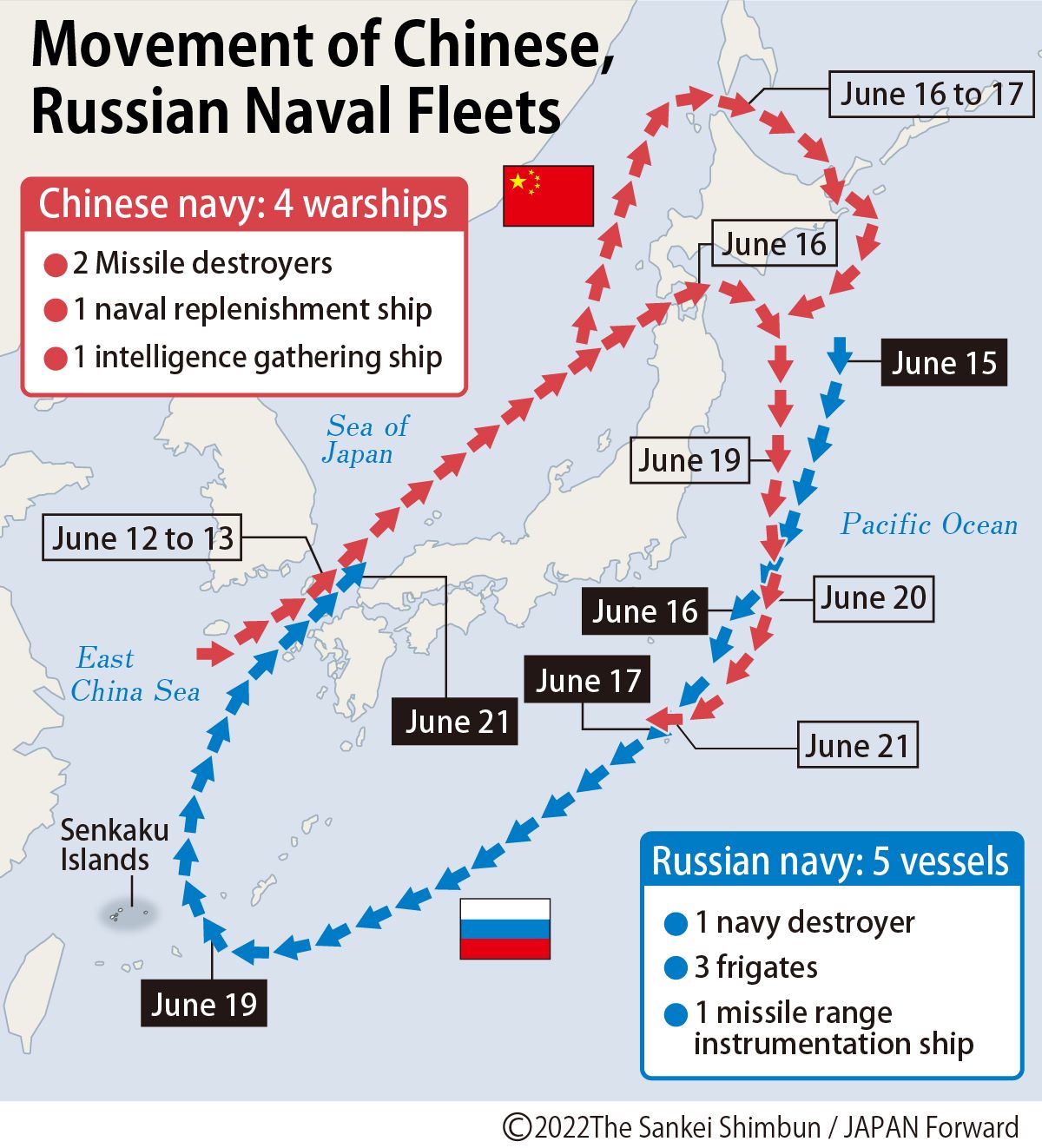A Russian-Chinese flotilla sailed toward the Northern Pacific Ocean on Monday while the United States deployed two warships for homeland defense operations to protect Alaska. This recent development highlights the increasing military activity in the region, raising concerns among defense analysts and prompting a response from the U.S. Navy. According to the Japanese Defense Ministry, a total of nine Russian and Chinese warships transited the La Perouse Strait, a designated international waterway known as the Soya Strait, eastward from the Sea of Japan to the Sea of Okhotsk from Sunday to Monday.
The Russian-Chinese naval formation is expected to reach the wider Northern Pacific Ocean by sailing further east and passing through Russia's Kuril Islands. If they continue on a northeastward voyage, these warships may arrive near the Aleutian Islands of Alaska. This maneuvering not only showcases the military capabilities of Russia and China but also signifies their growing cooperation in maritime defense.
The joint naval sailing by Russia and China coincides with the U.S. Navy deploying the cruiser USS Lake Erie and destroyer USS Sterett to the Northern Pacific Ocean and the Aleutian Islands, respectively. Furthermore, the U.S. Army has sent three units to the remote Shemya Island of the archipelago, indicating a heightened state of alert and readiness in response to the unfolding situation. The Lake Erie, which is homeported in San Diego, California, has been conducting homeland defense operations in the Northern Pacific Ocean since September 18, and was still active in the area as of Sunday, according to photos released by the service.
The San Diego-based destroyer Sterett, which departed on September 2 to patrol the Bering Sea, moored in Dutch Harbor on Amaknak Island of the Aleutian archipelago on September 13 and 18 during its operations. The U.S. Northern Command confirmed that the Sterett was sent to support the command's maritime homeland defense mission in response to the known Russian exercises in the region.
As military presence from Russia and China intensifies, it is essential to monitor the developments closely. Recent exercises, such as the Northern/Interaction-2024 drill held by China in the Sea of Japan and the Sea of Okhotsk, underline the ongoing strategic collaboration between these two nations. The growing military activity in the air and waters around Alaska has created a complex security environment that requires vigilance and proactive measures from the United States and its allies.
Key Takeaways
What You Will Learn
- The joint naval operations by Russia and China signify a growing military alliance.
- The U.S. military response includes deploying warships for homeland defense.
- Strategic maneuvers in the Northern Pacific Ocean are raising security concerns for the U.S.
- Recent military exercises highlight the increasing cooperation between Russia and China.
The Dynamics Of Age Gap Relationships: Insights And Expert Advice
Christian Soto: The Suspect Behind The Rockford Stabbing Spree
Astonishing Discovery: A Man Found With Three Penises In Rare Medical Case
Recommended Articles
Is Halle Bailey Married?Rampage Jackson's Ex-Wife
Remembering Mike Wolfe
Shahid Bolsen: The Original Name
Carrie Bernans: The Rising Star



ncG1vNJzZmibn6PBprrTZ5ydn5WpsqS0wJyYnZ2drnumsNRomqimpJq7prDUa2auq12jsri%2FjKCcmqqjYrWwucSlmKecXZmyp7HNrJxmqqWowKqtjJyfoqaRYsSivtKhoKmrXaeyoq%2FHZqeam5mbtqR5wKWYrKORYn56gZZva3JmmKm6rQ%3D%3D